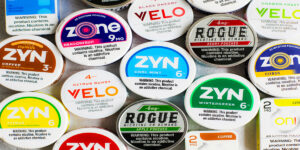E-cigarettes have surged in popularity across the globe, touted as a less harmful alternative to traditional smoking. However, their rising use, especially among teenagers, has raised significant public health concerns. Central to these concerns is the compliance of e-cigarette packaging with regulatory standards. A recent study has revealed notable shortcomings in e-cigarette packaging compliance in the UK, US, and Canada, calling for stricter regulations and enforcement.
E-Cigarette Packaging Regulations in the UK
In the UK, e-cigarette packaging is regulated by a combination of national laws and European Union directives, which require clear health warnings, accurate nicotine content labels, and the absence of any promotional elements that might appeal to minors. Despite these regulations, the recent study highlighted several compliance issues. A significant proportion of products did not adhere to format requirements for health warnings, and many featured designs appealing to younger audiences.
The UK government has been responsive, acknowledging the gaps in enforcement and expressing a commitment to tightening regulations. Proposed changes include stricter penalties for non-compliance and enhanced monitoring mechanisms to ensure all products meet the required standards.
E-Cigarette Packaging Regulations in the US
In the United States, the Food and Drug Administration (FDA) oversees e-cigarette packaging regulations. These include mandates for health warnings, ingredient lists, and nicotine content disclosures. However, the study found that compliance was inconsistent, with numerous products failing to meet the required standards. Particularly concerning were the bright colors and playful designs that appeared to target younger consumers.
The FDA has recognized these issues and is considering more stringent regulations. Possible measures include more detailed packaging requirements, increased inspections, and higher penalties for non-compliant manufacturers.
E-Cigarette Packaging Regulations in Canada
Canada’s approach to e-cigarette regulation is governed by the Tobacco and Vaping Products Act, which mandates clear labeling and health warnings. However, as the study indicates, compliance varies significantly. Many products on the market failed to meet the format requirements for health warnings, and there were numerous instances of inaccurate nicotine content labeling.
In response, Canadian regulatory bodies are contemplating revisions to the existing regulations to close these gaps. This includes more rigorous enforcement protocols and potential new regulations to limit youth-appealing packaging designs.
Research Team and Methodology
The research was spearheaded by Dr. Matilda K. Nottage from the Institute of Psychiatry, Psychology, and Neuroscience at King’s College London. The team comprised experts from the University of South Carolina, the University of Waterloo, and other renowned institutions. They conducted a content analysis of 108 e-cigarette products, encompassing disposable e-cigarettes and e-liquid bottles from the UK, Canada, and the US.
Products were selected based on a variety of brands, flavors, and nicotine content to ensure a comprehensive overview of the market. This method provided a robust dataset for identifying compliance issues across different regions.
Findings on Packaging Compliance Variations
The study revealed significant variations in packaging compliance across the three countries. While some products met the regulatory requirements, a substantial number did not. For example, 33% of disposable e-cigarettes and 17% of e-liquid bottles failed to meet the format requirements for health warnings.
These discrepancies highlight the need for more uniform and stringent regulations across countries to ensure consistent compliance and better protection of public health.
Label Inconsistencies
Labeling inconsistencies were another major issue identified in the study. These included missing or inaccurate information about nicotine content and product characteristics. Such discrepancies can mislead consumers, particularly young people, about the risks associated with e-cigarette use.
To address this, the study recommends clearer and more standardized labeling requirements, along with stricter enforcement to ensure all products accurately reflect their contents.
Youth-Appealing Elements in Packaging
One of the most concerning findings was the prevalence of youth-appealing elements in e-cigarette packaging. Many products featured bright colors, cartoon characters, and other designs likely to attract teenagers. This is particularly troubling given the rising rates of e-cigarette use among young people.
Regulatory bodies in all three countries need to take urgent action to ban such packaging designs and ensure that e-cigarette products do not appeal to minors.
Health Warnings on E-Cigarette Packaging
Health warnings are a critical component of e-cigarette packaging, intended to inform consumers about the potential risks. The study found that while most products included health warnings, many did not meet the required format standards. This diminishes the effectiveness of these warnings and fails to adequately inform users.
Ensuring that all e-cigarette packaging includes clear, prominently displayed health warnings is essential for protecting public health.
Nicotine Content and Product Characteristic Labels
Accurate labeling of nicotine content and product characteristics is vital for consumer safety. The study revealed significant compliance issues in this area, with many products providing incomplete or misleading information.
To address this, the study recommends more rigorous labeling standards and regular checks to ensure all products on the market comply with these requirements.
Comparative Analysis of Packaging Compliance
A comparative analysis of packaging compliance across the UK, US, and Canada revealed that while each country has its strengths, all have areas needing improvement. The UK showed relatively better compliance with health warning formats, while the US and Canada had more issues with youth-appealing designs.
Identifying best practices from each country and implementing them across the board could enhance overall compliance and better protect public health.
Government and Regulatory Body Responses
Governments and regulatory bodies in all three countries have acknowledged the findings of the study and are considering various measures to address the identified compliance issues. This includes revising existing regulations, increasing penalties for non-compliance, and enhancing enforcement mechanisms.
Case studies of effective regulation, such as the UK’s approach to health warnings, provide valuable insights for other countries looking to improve their own regulatory frameworks.
Consumer Awareness and Education
Educating consumers about the risks associated with e-cigarettes and the importance of compliant packaging is crucial. Public awareness campaigns, school programs, and collaborations with advocacy groups can help inform the public and reduce the appeal of e-cigarettes among young people.
Industry Responsibility and Self-Regulation
The e-cigarette industry also has a role to play in ensuring compliance with packaging regulations. Manufacturers should adopt self-regulation measures, such as internal compliance checks and adherence to best practices, to complement government efforts.
Examples of industry-led initiatives include voluntary compliance programs and partnerships with public health organizations to promote responsible marketing practices.
Future Directions for E-Cigarette Packaging Regulation
The future of e-cigarette packaging regulation lies in more comprehensive and uniform standards across countries. Innovations in packaging technology, such as digital labeling, could enhance compliance and provide consumers with more detailed information.
Regulatory bodies should also consider the role of technology in monitoring and enforcing compliance, such as using AI to detect non-compliant products.
Impact of the Study on Policy and Regulation
The findings of this study have the potential to significantly influence policy-making and regulation. By providing concrete evidence of compliance issues, the study supports the need for stricter regulations and enhanced enforcement efforts.
Regulatory bodies have already begun to respond, with several proposing changes to existing regulations and increased penalties for non-compliance.
Conclusion
The latest research highlights significant compliance issues in e-cigarette packaging across the UK, US, and Canada. Addressing these gaps is essential for protecting public health, particularly the health of teenagers. Governments, regulatory bodies, and the e-cigarette industry must work together to ensure that all products on the market meet the required standards. By doing so, they can mitigate the risks associated with e-cigarette use and safeguard the well-being of the public.
FAQs
What are the current e-cigarette packaging regulations in the UK?
The UK requires e-cigarette packaging to include clear health warnings, accurate nicotine content labels, and the absence of promotional elements that appeal to minors. However, compliance with these regulations has been inconsistent.
How does the US regulate e-cigarette packaging?
In the US, the FDA mandates health warnings, ingredient lists, and nicotine content disclosures on e-cigarette packaging. Despite these requirements, many products fail to comply, particularly in terms of youth-appealing designs.
What are the compliance issues identified in Canada?
Canada’s regulations under the Tobacco and Vaping Products Act require clear labeling and health warnings. The study found significant non-compliance, with many products failing to meet these requirements and inaccuracies in nicotine content labeling.
Why is accurate labeling on e-cigarette packaging important?
Accurate labeling ensures that consumers are informed about the nicotine content and potential risks of e-cigarettes. Misleading or missing information can lead to increased use among young people and other health risks.
How can governments improve e-cigarette packaging compliance?
Governments can improve compliance by tightening regulations, increasing penalties for non-compliance, enhancing enforcement mechanisms, and adopting best practices from other countries.


















